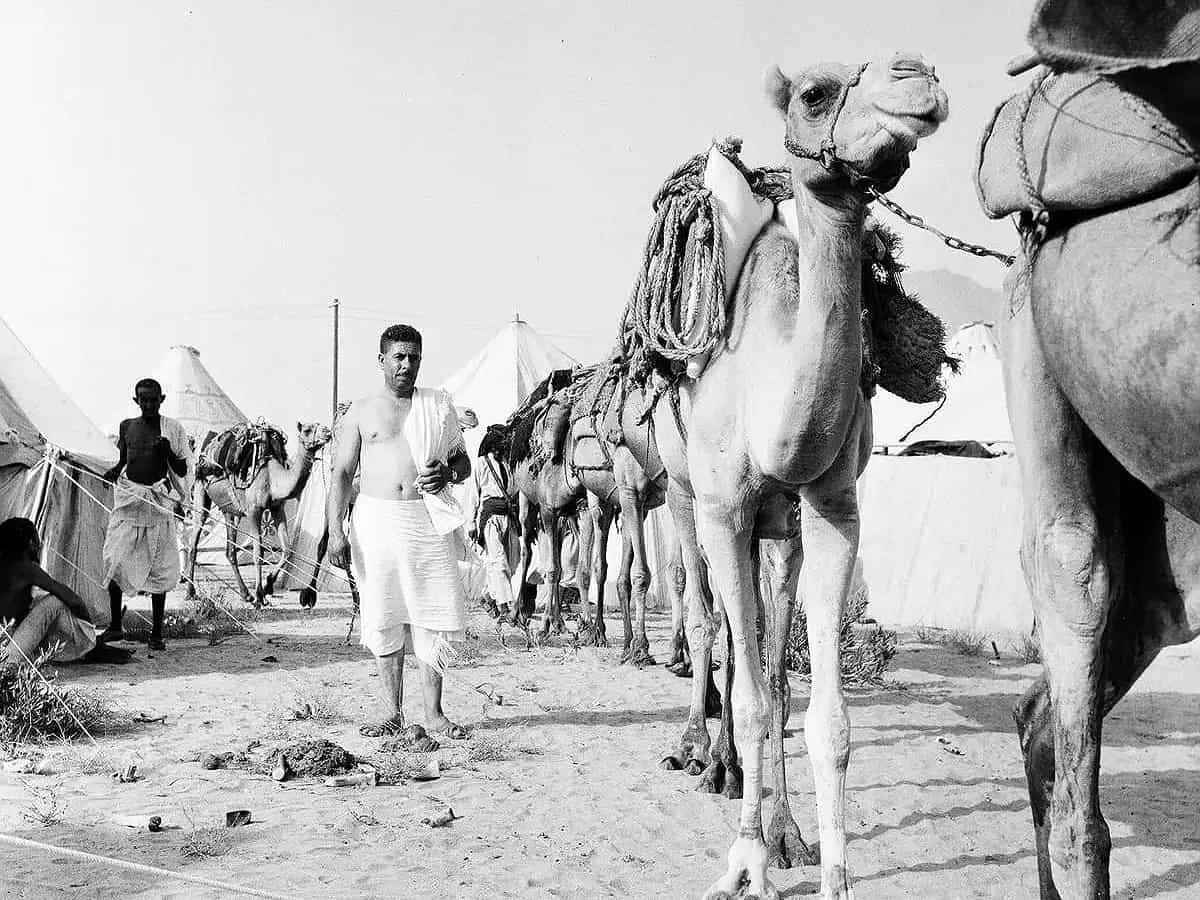
As Muslims endeavour to fulfil the fifth pillar of Islam by journeying to Makkah, convoys of pilgrims have traversed various routes and pathways toward the Grand Mosque in Makkah, Saudi Arabia.
Along the ancient Haj routes, individuals observed advantages in commerce, disseminated cultures and knowledge, and influenced the societal structure of the gatherings, the Saudi Press Agency (SPA) reported.
Haj routes served as vital communication links between Islamic cities and Kingdoms for centuries.
These routes were numerous, but the seven most famous are highlighted by the SPA.

The Darb Zubaydah
The Darb Zubaydah (Zubaydah’s trail), named after Zubaydah bint Jaafar bin Abi Jaafar Al-Mansur, the wife of Caliph Harun Al-Rashid, was a significant Islamic pilgrimage and trade route during the Islamic era.
This route served pilgrims travelling from Baghdad, passing through Kufa in Iraq, and traversing the northern and central regions of the Kingdom until reaching Makkah.
Its total length within the Kingdom’s territory exceeds 1400 kilometers, spanning five regions: the Northern Border, Hail, Qassim, Madinah, and Makkah Regions.

Since Iraq’s conquest and Islam expansion, this route has transformed water centers, grazing areas, and mining sites into significant stations, especially during the Rightly Guided Caliphate era.
According to historical and geographical sources, the route was designed distinctively and efficiently. Stations and rest houses were constructed along it, and its surface was paved with stones in sandy or muddy areas.
Additionally, the route was equipped with essential amenities such as wells, ponds, and dams.
Basra/Makkah route
The Basra/Makkah route is the second most significant route. It starts from the city of Basra and passes through the northeastern part of the Arabian Peninsula in Wadi Al-Batin.
It traverses various desert regions, the most challenging of which is the Al-Dahna Desert.
The route passes through the Qassim region, renowned for its fertile valleys and springs, paralleling the Kufa-Makkah road and converges at Um Khurman, near Dhat Irq site.
The road spans about 1,200 km and features 27 main stations, with four currently located within the Kuwaiti and Iraqi borders, while the remaining stations are situated in Saudi Arabia.
Egyptian (and North African) Haj road
The third road is the Egyptian Haj road, utilized by Egyptian pilgrims and those from Morocco, Andalusia, and Africa on their journey to Makkah.
They cross the Sinai Peninsula to reach Ayla (Aqaba), the initial station along the route. Subsequently, they travel through two routes: an internal trail and a coastal trail.

Yemeni Haj routes
Yemeni pilgrims traveled to Makkah via various routes from northern Yemen cities like Aden, Taiz, Sanaa, Zabid, and Saadah.
The routes comprised of coastal, internal, and upper roads, each with its own path and stations.
Omani Haj routes
Omani pilgrims followed two routes: one from Oman, passing through Yabrin, Bahrain, Yamama, and Dhariyah, and the other from Furq, Oklan, Habah coast, Shahr, and Yemeni roads to Makkah.
Bahrain-Yamama-Makkah Haj route
The Bahrain-Yamama-Makkah Hajj route was significant, as it crossed central parts of the Arabian Peninsula and connected many countries and regions.
It linked the Hejaz and Iraq, the centre of the Abbasid caliphate. Early Muslim geographers stated that the Yamama road met the Basra pilgrimage route. Yamama had two roads to Makkah.
Levantine pilgrimage route
The seventh pilgrimage route was the Levantine pilgrimage, which connected the Levant to the holy sites of Makkah and Madinah
It is known as Tabukiyah in reference to the town of Tabuk through which it passes.
The route starts from Damascus and passes through important houses like Adhra’at, Ma’an, and al-Mudawwara, then enters Kingdom lands, passing through Halat Ammar, Dhat al-Hajj, Al-Aqra’, Al-Akhdar, Al-Moazam, Hijr, Al-Ula, and Qarah.
Throughout the Islamic era, the road route between Tabuk and Al-Ula remained unchanged, with some stations bearing multiple names.



